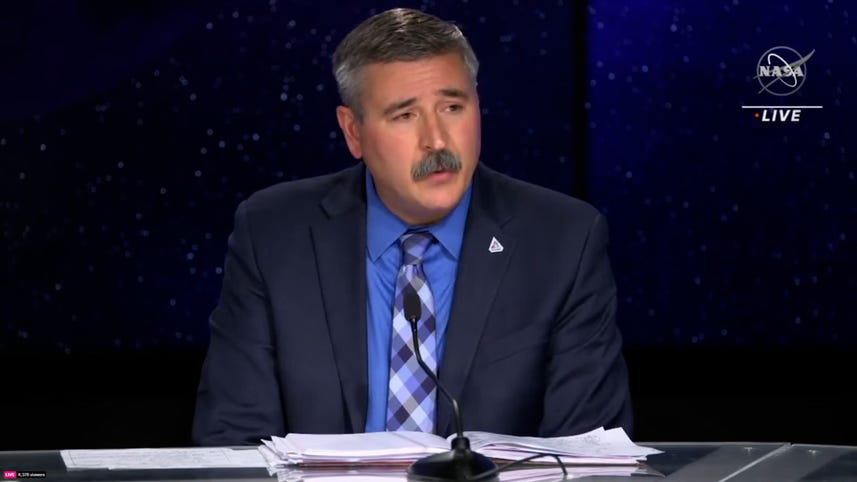
Speaker 1: Um, once we got through the, uh, the, uh, propellant loading on the rocket, both the, uh, core stage and the upper stage, they started the engine bleed. Uh, we talked at our flight readiness review about the engine bleed. We knew that that was a risk headed into this launch campaign, and it would be the first time demonstrating that successfully. Uh, we did encounter an issue, uh, uh, chilling down engine number three, we need the engine to be at the, uh, crowd genetically cool temperature, such [00:00:30] that when it starts, it's not shocked with all the, the cold, um, uh, uh, the cold fuel that flows through it. So we needed a little extra time to, to assess that, um, when the team, uh, started working through that, they also saw an issue with a, uh, vent valve, um, at the inter tank. So the combination of not being able to, uh, get the, uh, engine three chilled down and then the, uh, vent valve, uh, issue that they saw at the inter tank really caused us to [00:01:00] pause today.
Speaker 1: And, and we felt like we needed a little, little more time. Um, there was also a series of, uh, weather issues throughout the window. We would've been no go for weather at the beginning of the window due to precipitation. And, uh, later on in the window, we would've been no go for lightning within the, uh, within the launchpad area. So, um, the team worked through a number of issues today. Uh, the team was tired at the end of the day, and we just decided that it was the best to knock it off and, uh, to reconvene tomorrow. [00:01:30] So we've got a, uh, mission management team meeting at, uh, 3:00 PM Eastern. We're gonna give the team time to rest, first of all, and then come back fresh tomorrow and reassess, um, what we learned today and then, uh, develop, uh, a series of options. It's too early to say what the options are.
Speaker 1: And then, um, is, is, uh, Jackie said earlier, uh, we will, uh, come back and talk about where we stand, um, tomorrow evening with all of you. Um, [00:02:00] again, it's, it's an incredibly hard business that we have, um, in spite of, in spite of the challenges that we had, as well as some other, um, constraints that the team had to work through and set up for. Uh, for example, we had 42 collision avoidance cutouts that we had to manage over the course of the, um, of the two hour window. Most of those were only a couple of seconds long, but there were a few that were about a minute long. Um, you know, when you start thinking about the type of mission that we're flying, it, it really helps you understand just [00:02:30] how unique and how complex, uh, the space launch system is. And the Orion and, and the arments program is we, we have this upper stage, the interim crowd propulsion stage that lofts the, um, the spacecraft to a 975 nautical mile insertion orbit, uh, along with the, uh, the SLS core stage. And with that, we need, we need the performance from it, but we fly through part of the orbital debris field, the micro meteor in orbital debris field. And then, uh, one
Speaker 2: Orbit later, we commit [00:03:00] to the point of translin injection. So as we fly up through this orbital debris, and then back down to lower orbit, and then out through the point of translin injection, we have to know where all of these objects are, and that explains those 42 cutouts. And, and that is something that our operations teams were prepared to do today. We just didn't get to the launch window. So, um, a number of challenges, uh, we were ready for some of 'em and, and the, uh, technical challenges we encountered on the, um, on the engine bleed. And the vent valve are just some things we're gonna have to go look at today. Uh, look at [00:03:30] tomorrow after we get a little smarter and get, get rested. So, um, with that.